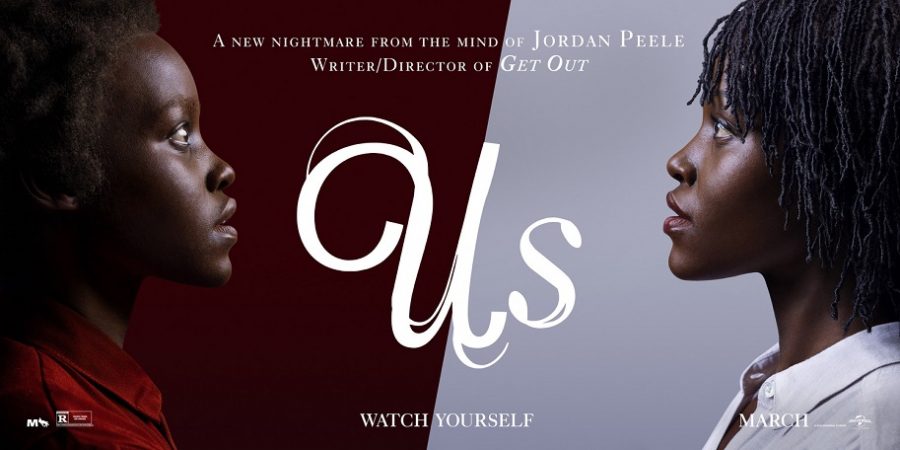Let’s Get Reel: Us
What is the current state of America? In Jordan Peele’s 2017 smash hit and directorial debut, Get Out, he seemed to suggest the new-found subtlety of racism. The explicit acts of violence of the past had been replaced with ignorant comments, long looks and an over-eagerness to focus on racial issues with African Americans (i.e. “I would have voted for Obama for a third term”). However, Peele’s new film Us takes a different tone.
Unlike Get Out, this film did not focus on race, but rather American society as a whole. There is a clear class distinction in our country between the middle-class and the poor, the living comfortably and the barely living at all, the haves and the have nots. Peele goes further in this social commentary by offering his conclusion on why that is. His answer is that there is no legitimate reasoning for the distinction. Governmental influence, random events and people being a product of their environment caused them to be who they are. There is no difference between the groups of people in this film. This is shown strongly through the audience’s assumption that Adelaide was the one attacked in the beginning of the film, not the attacker.
People who are not better, smarter, or more special in any way, but who have privileges that other people do not will benefit more in their life and it seems there is nothing the non-privileged can do to change their fortune. The have nots have lived in poverty for their entire lives, been stripped of their identity and are sick of it. They are willing to do anything to live a life. Peele also reminds us that the “haves”, when pushed, react through violence and murder in the exact same way as their “evil” counterparts. Peele again shows how similar all people are. The duality of people is the same. Despite who you are on the surface, everyone has a “shadow” who, when pushed, is capable of awful things. Does this suggest that all people are morally wrong? I think the better question to ask is: where are the people in charge?
In the film, those who conducted the cloning experiment and left them to rot underground are nowhere to be found. Are they not more responsible for this violence? In society today, Peele seems to be showing how our officials, those whom we trust, do not have our best interests in mind. They use certain groups of people in our country and then once their agenda is fulfilled, abandon them.
Instead of deciding who is the hero and who is the villain between Adelaide and Red, it would seem more proper to see them both as victims to a system or country that does not value their lives. Unfortunately, this is why Peele’s films resonate as they do. Not only are they brilliantly made, but they speak with shocking clarity of the sad truth with which we find ourselves living today.
Some have suggested that the final human wall seen at the end of the film is commenting on President Trump’s proposed border wall. Since this wall is shown in the beginning and end of the film through the Hands Across America commercial and the human chain at the end, it is clear Peele has a meaning for this. Keeping in mind that Red said she wanted this attack to “send a message across the world,” I do not think it was commenting on Trump and his wall, though his goal of exclusion is certainly a reason why Peele felt this film was important to make (to prevent that from happening and promoting inclusivity).
Hands Across America was an effort for all Americans to come together and make our country a better place to live for everyone. This is Peele’s answer for our nation’s problems with equality. Everyone must come together. Those who are privileged must look at themselves in the mirror and see how they can make an impact. Through action and dialogue between the groups, classes, races, etc. our country can unite hands metaphorically and create equality literally.



